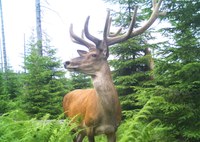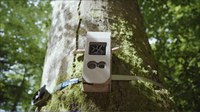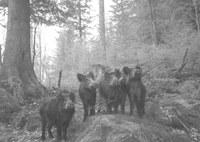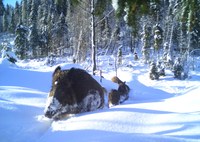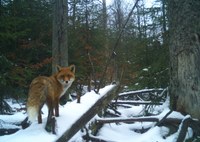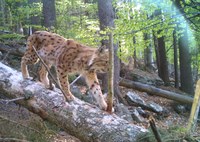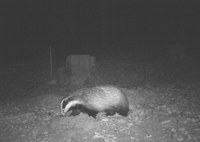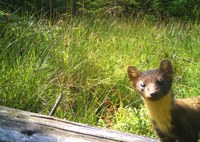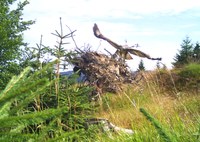Freiburg researchers investigate wildlife populations in ten large protected areas in Germany for the first time
Freiburg, Jul 10, 2023
A photo of a red deer taken by a camera trap. The red deer is the most common ungulate in the national parks in Germany. Photo: Bavarian Forest National Park Administration
7591 red deer, 3443 roe deer, 4876 wild boar, 36 wolves, 16 lynxes and 227 red foxes: These are the results of the first standardised monitoring of wildlife populations in ten large protected areas in Germany. It was carried out by scientists at the University of Freiburg led by Prof. Dr. Marco Heurich and Dr. Christian Fiderer from the Faculty of Environment and Natural Resources. From 2019 to 2020, more than 1.2 million images were recorded with 643 camera traps. The population density in the protected areas could then be estimated using statistical models and artificial intelligence. The wildlife monitoring is part of a research and development project of the Federal Agency for Nature Conservation. Its results are intended to help improve ungulate population management and further elucidate their impact on ecosystems. Results are expected to be published in fall 2023. As of June 1, 2023 the national parks have continued their monitoring in order to derive population developments.
Monitoring as the foundation for wildlife management
The populations were surveyed in the following national parks: Bavarian Forest, Berchtesgaden, Eifel, Hainich, Harz, Hunsrück-Hochwald, Kellerwald-Edersee, Müritz and Black Forest as well as in the Königsbrücker Heide Wilderness Area. With the help of such monitoring, it should be possible in future to identify correlations between population sizes and the effect of ungulates on their ecosystem in these protected areas. It is the only way to sensibly manage the populations of red deer, roe deer and wild boar. “Monitoring ungulate populations is a crucial part of the management process in protected areas, as it provides important data on the development of wildlife populations and serves as a basis, justification and success control for the regulation of wildlife populations,” says project leader Marco Heurich.
Use of artificial intelligence to cope with the volume of data
In order to classify the images, a database was set up at the University of Freiburg, to which the images could be uploaded. “We had to rely on artificial intelligence in order to be able to determine the species of ten large protected areas from this massive amount of images,” says Christian Fiderer, who coordinated the project. “Without artificial intelligence, we would still be sitting on the manual classification of the images two years from now.”
The second project phase has begun
After the first data have been evaluated, the national parks are already planning to continue the monitoring in order to be able to understand developments of the wildlife populations. This will also include studying the impact of the expanding wolf populations on ungulate populations. “Since June 1, 780 camera traps are used in eleven national parks to record the populations of deer, roe deer and wild boar,” explains Dr. Christian Fiderer, project coordinator at the University of Freiburg. The project is also accompanied by three other study areas in Germany, Switzerland and Romania, with a total of 1,063 camera traps being used.
Press photos for download:
Contact:
Office of University and Science Communications
University of Freiburg
Tel.: 0761/203-4302
e-mail: kommunikation@zv.uni-freiburg.de


